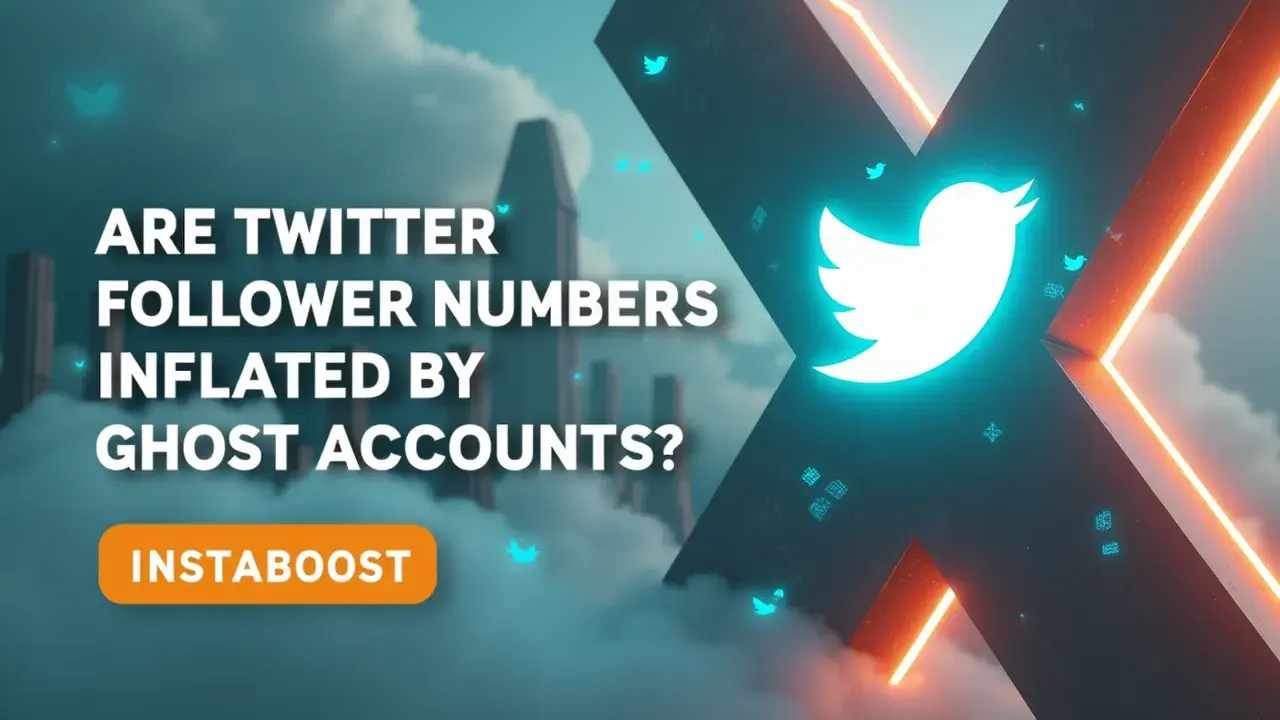Are X (Twitter) Follower Numbers Inflated by Ghost Accounts?
Follower counts can be skewed when inactive or ghost accounts accumulate, reducing the apparent quality of reach. The impact shows up in weaker engagement metrics, where likes, replies, and retweets do not match large audiences. Reliability improves when attention shifts to active audience behavior, such as consistent interactions over time and relevance of profiles. The smart path is to evaluate engagement ratios and audience activity to gauge real influence.
Behind the Numbers: The Reality of Twitter Followers
It’s easy to treat Twitter follower counts like a scoreboard – assuming that a bigger number means someone has real influence. But those numbers don’t always tell the full story. When you dig a bit deeper, a lot of those followers aren’t actually active.
These “ghost accounts” don’t do much; they rarely post, respond, or like anything, and sometimes there’s not even a real person there. They make the number look good but they aren’t really part of any conversation.
These “ghost accounts” don’t do much; they rarely post, respond, or like anything, and sometimes there’s not even a real person there. They make the number look good but they aren’t really part of any conversation.
For anyone who cares about building something real – whether it’s a personal profile, a business, or a creative project – it’s worth noticing that your true reach might be much smaller than what your follower count suggests. It’s sort of unsettling when you realize how many people might never see what you share.
That’s why more people – and even some tools from services like INSTABOOST – are trying to sort out which followers are actually paying attention and which aren’t. You sometimes notice this even when you buy X services it makes you think a bit differently about what those numbers mean, and what actually matters if you want your posts to connect with anyone at all.
That’s why more people – and even some tools from services like INSTABOOST – are trying to sort out which followers are actually paying attention and which aren’t. You sometimes notice this even when you buy X services it makes you think a bit differently about what those numbers mean, and what actually matters if you want your posts to connect with anyone at all.

How Ghost Accounts Creep Into Your Follower Count
It’s not the flashiest method, but it usually works. Most companies and people who care about their Twitter accounts end up using outside tools or just scrolling through their followers themselves, trying to spot ghost accounts – the ones that never tweet, stick with the default profile picture, or mostly follow others but don’t get followed back much. The numbers can be surprising: studies suggest almost 40% of users are inactive or bots.
So, when you see someone with a huge follower count, a lot of those accounts probably aren’t active or paying attention. That’s worth thinking about, since it changes what those numbers really mean. If someone’s reputation relies on followers who never interact, their actual influence doesn’t always match what the count suggests. Tools like Twitter Audit or Followerwonk can show you roughly how many inactive accounts are following somebody, and even the analytics services that agencies use – or things like INSTABOOST – tend to focus more on engagement than just the raw follower total, for exactly that reason.
I’ve even seen people buy engaged followers on X to try to change those stats, though that brings up its own questions. So when you see someone with a big number next to their name, it’s hard not to wonder if the number means what it seems to. Once you know how many ghost accounts are floating around, those big follower counts look different, and you start to notice more who’s actually there and who isn’t…
I’ve even seen people buy engaged followers on X to try to change those stats, though that brings up its own questions. So when you see someone with a big number next to their name, it’s hard not to wonder if the number means what it seems to. Once you know how many ghost accounts are floating around, those big follower counts look different, and you start to notice more who’s actually there and who isn’t…
Moving Beyond Numbers: Building a Meaningful Twitter Audience
I used to spend a lot of time looking for shortcuts – any trick that promised more followers, fast. Lately, I’m more interested in the systems behind what I do. It’s easy to get caught up in things that don’t really matter, like noticing a wave of ghost accounts or getting curious about some new app that promises a quick boost. There were times when I’d get pulled into reading about ways to increase tweet likes, halfway believing it might actually help.
But now I think less about those quick fixes, and more about who I actually want to talk to, and what kind of space I’m hoping to build. Instead of tracking my follower count every day, I pay more attention to whether anyone is actually responding – if someone replies with their own thoughts, or a retweet turns into an actual conversation, or a DM comes in that feels like a real connection. That means a lot more to me than a list of names that never show up. For me, having a system just looks like sharing things I actually care about and making time to reply to people – basically being there, not just chasing trends. I still check analytics now and then, but not just for bigger numbers.
I look at how many people reply, or if the threads I start seem to go anywhere. There’s not much instant reward in it, and sometimes it feels slow, but I’d rather build around actual back-and-forth than watch the numbers go up and down. Over time, it’s gotten easier to notice when followers aren’t real, and the whole thing feels less empty. I still catch myself thinking about some new tool that promises quick growth, but honestly, the small, steady work ends up mattering more.
Resisting the Numbers Game: Why Quality Still Matters
Letting go of the urge to watch the numbers all the time can actually be a relief, even if it feels like the algorithm keeps reminding you to care. On Twitter, there’s this background push to get your follower count up, but after a while, the number starts to lose its meaning – especially when a lot of those followers are bots or people who hardly use their accounts. People look at follower counts as a shortcut for credibility, but if most of the accounts aren’t real or paying attention, the number doesn’t really reflect anything important.
I see people getting caught up in things like targeted Twitter impressions, which just adds more layers between you and whatever’s actually happening. If you get rid of the inactive followers or bots and your count drops, it doesn’t really change much about your experience. It’s easy to slip into wanting a profile that looks good at first glance, but the conversations and replies from real people end up being what you remember.
There are services like INSTABOOST that say they can boost your numbers quickly, but those aren’t the interactions that stick. Pruning your followers can feel awkward, but it can also make things clearer – showing you who’s actually interested, who replies, who shares what you post, who starts a conversation. That kind of connection doesn’t always show up in the numbers, but it’s the part that actually feels like it matters, even if the count on your profile isn’t as high as it used to be…















